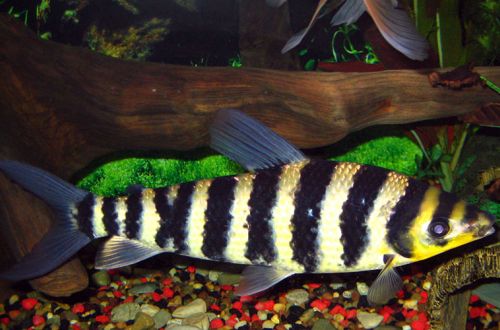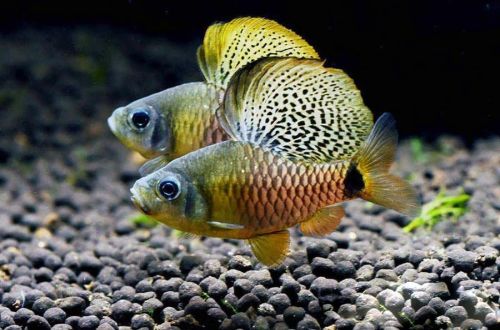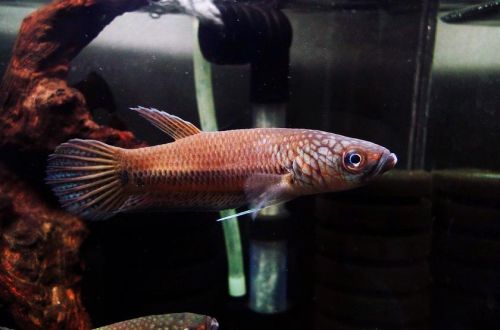
Leporinus striped
The striped leporinus, scientific name Leporinus fasciatus, belongs to the Anostomidae family. The alternating black and yellow stripes in the coloration of the fish have attracted the attention of aquarists for many years, making it one of the most popular tropical pet fish.

There is an interesting feature – the number of stripes on the body depends on the age of the fish, like annual rings in trees. Young fish have only 5 stripes, by the first year of life the first is divided into two more, and by the age of 3 years there are already 9 black stripes.
Habitat
The fish was discovered as early as the late 18th century in the river systems of Central and South America, and is also widespread in the Amazon. They live in fast moving rivers. During the rainy season, they move to flooded forest areas. When the water recedes, fish often remain in ponds and backwaters. They feed mainly on algae, plant debris, worms, insects, and sometimes small fish.
Description
Leporinus striped has an elongated body, tapering towards the tail, and a pointed head. A distinctive feature is the alternation of contrasting stripes of yellow and black, the number of which increases with age.
Food
Fish prefer plant foods. You can serve both specialized industrial feeds from vegetable raw materials (vegetable flakes, dried algae plates, various granules, etc.), as well as home-made preparations from finely chopped spinach leaves, lettuce or young shoots of tender plants. With a lack of food, aquarium plants can suffer.
Maintenance and care
An important condition is the maintenance of high water quality, for these purposes it is advisable to purchase more expensive canister filters and additional sprayers for effective aeration. Once every two weeks, part of the water (25 – 50%) should be replaced with fresh water. It is recommended to ensure sufficient movement of water in the aquarium, simulating the flow of a river. As a rule, canister filters are able to create the desired effect, otherwise special collectors should be used.
In the design, give preference to objects made of wood (driftwood, roots, etc.) in addition to the decorative effect, they will become an excellent basis for the growth of unicellular algae – an additional source of food. The ground is sandy with several large smooth stones. Do not use fragile design elements, fish are very mobile and can destroy all your elegant designs. Also, be careful about the choice of plants, remember that fish can severely damage soft leaves and stems.
Social behavior
Leporinus striped is quite peaceful if it is contained in a group of at least 6 individuals of any species, with a smaller number, signs of aggression appear. This species is compatible with other fish of similar size and temperament, and is a danger to small fish. A negative feature of Leporinus behavior is the “love” for long fins, which they often gnaw off.
Breeding / reproduction
At home, there are no successful breeding experiments, because it is not possible to reproduce the conditions of the rainy season and the possibility of migration. Leporinuses are caring parents; in nature, the male arranges a kind of nest where the female lays her eggs, and subsequently protects her until the offspring appears.
Diseases
Fish of this family, due to their physiological characteristics, have a predisposition to infection with skin parasites, however, in favorable conditions this rarely occurs, but changes in water quality will almost certainly lead to similar results. Read more about symptoms and treatments in the Aquarium Fish Diseases section.





